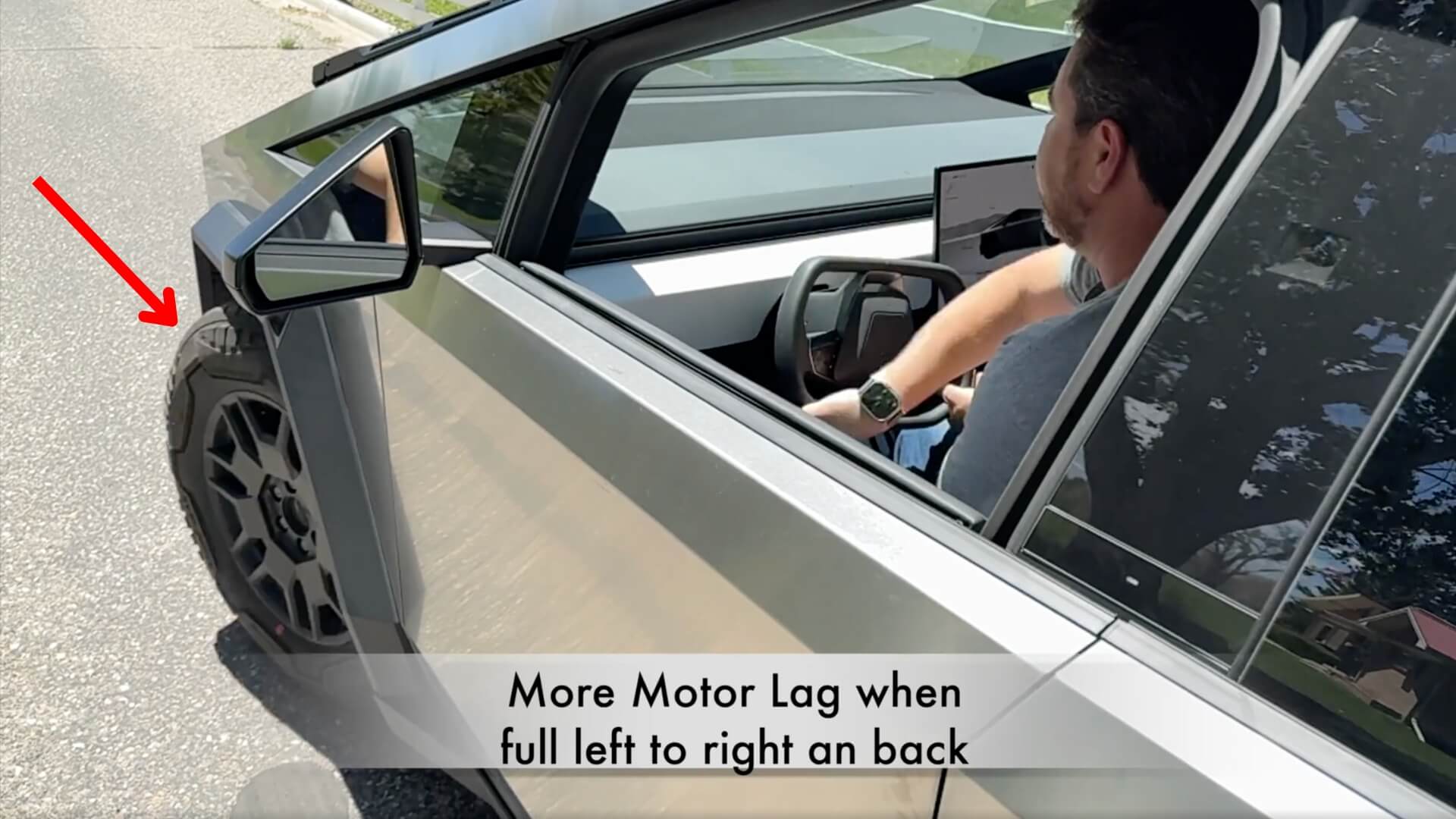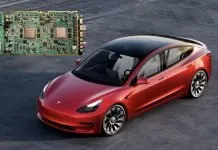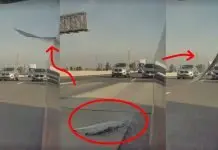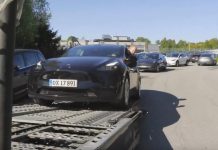Tesla Cybertruck is indeed a polarizing electric truck with no other vehicle matching up to its crazy fan-following. The uniqueness extends beyond its robust steel exterior to its remarkable features. One such feature is steer-by-wire.
Tesla claims this technology offers quicker responses, but a recent video shared on social media suggests otherwise. The video shows the Cybertruck’s steer-by-wire system causing significant lag when the driver quickly turns the steering wheel.

Cybertruck’s Disturbing Steer-By-Wire Lag Video
A video is reigniting the debate on the input lag showing the Cybertruck’s steer-by-wire system in action. The footage posted on Reddit, which quickly went viral, shows a driver rather rapidly rotating the Cybertruck’s steering wheel.
Testing out how bad the lag in Steer by Wire is vs Ford F-150
byu/walkingcrow incybertruck
Alarmingly, the truck’s wheels respond with a noticeable delay. Critics argue this lag could be unsafe, especially when the vehicle is at speed and requires prompt maneuvers.
Netizens are calling out on the input lag saying how unsafe and dangerous it could be while driving. However, the input lag is rather a common phenomenon with current steer-by-wire systems according to experts.
What Is Steer-By-Wire?
When Tesla began long-awaited deliveries of the Cybertruck in November 2023, the bold sale was about its steer-by-wire system’s immediacy.
Steer-by-wire systems use electronic controls to process driving signals from the driver’s input, commanding the wheels via actuators. Essentially, drivers use the steering wheel in the traditional way, but instead of mechanical connections, the turns are executed by actuators connected to the wheels.
What Is The Problem With It?
The automaker argued how traditional steering suffers from inherent lag due to mechanical play, whereas the steer-by-wire setup minimizes this issue. The steer-by-wire is better at accuracy and responsiveness all while significantly reducing the weight of the vehicle. However, this reassurance did not quell all doubts, and sit right with everyone.

Another similar video of Cybertruck’s input lag from earlier this year too came to light. One user from Hacker News even calculated the lag to be 125 ms to compare how the lag would look like if the Cybertruck wasn’t stationary.
Wow huge lag in lame-named Cybertruck’s much hyped steer buy wire set up — with variable ratios, this makes it pretty dangerous to drive — why Throttle House reviewers dubbed it “scary”
Look for $TSLA fanbois to claim this can be fine tuned / fixed with an over the air update. pic.twitter.com/Oujuwfq7cD
— Facts Chaser 🌎 🤦🏻♂️ (@Factschaser) February 9, 2024
Considering the delay to be significant another user said how such a delay can cause an overreacting run-away correction cycle. Something that could very well be dangerous for a heavy vehicle like Tesla Cybertruck.
The system is going to effortlessly integrate self-driving with fewer parts to make the process less complex and efficient in the near future. Nissan’s Infiniti Q50 is the first vehicle with the steer-by-wire system using it for over a decade now. However, people are still wary of replacing an old trusty physical system with a purely electronic one.
Why?
The innovative tech is still in its beta version and can make do with numerous updates and advancements. It is natural for people to feel safety concerns as no mechanical parts are moving the wheels for you.
Having said that, there are several plus points of the advanced system. Apart from increased productivity, accuracy, and speed, the steer-by-wire system is going to make turning the steering wheel way less complex.
Imagine yourself driving with only gentle taps for slight turns and a bit denser for sharp turns as the system learns and adapts to your driving style with steer-by-wire. One can get used to that. Right?
Steer-By-Wire Is A Safety Concern?
Now the problem with Tesla’s Cybertruck is nothing new, these issues have all out there from the start. Last year we covered the same in our post on leaked documents claiming the safety concerns in Tesla vehicles.
On one hand, the ability to turn the steering wheel so rapidly might seem advantageous. On the other hand, if the wheels cannot keep up, it could create a false sense of responsiveness, potentially leading to hazardous situations. Critics argue that this could be problematic in emergencies requiring split-second precision.
Supporters of Tesla’s steer-by-wire system say it works really well during normal driving. When you turn the steering wheel at the usual speeds, you don’t notice any potential lag, and the system reacts quickly a big plus.
The problem happens when the steering wheel is turned faster than the system can handle, as shown in the viral video. Many are still unclear on what actually steer-by-wire is and confuse it with drive-by-wire.
One Reddit user aptly sums up this saying how scary the steer-by-wire system is and the failure of which can cause serious damage.
Comment
byu/totpot from discussion
inCyberStuck
Bottomline
While Tesla’s steer-by-wire system represents is revolutionary and the next big thing for Tesla. Its implementation and potential implications require careful consideration from the automaker.
As thousands of Cybertrucks are to hit the road, Tesla must address safety concerns like these to ensure confidence in this innovative system. What do you think?


















